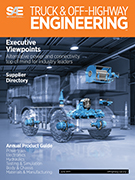Book

The New Future of Public Transportation
2024-04-11
From hydrogen-fueled buses to AI-driven advancements and cybersecurity, this book offers an unparalleled glimpse into the future of transit. Navigate the complexities of transit planning in a post-COVID world, where innovative solutions are essential to tackle infrastructure challenges and workforce shortages.








